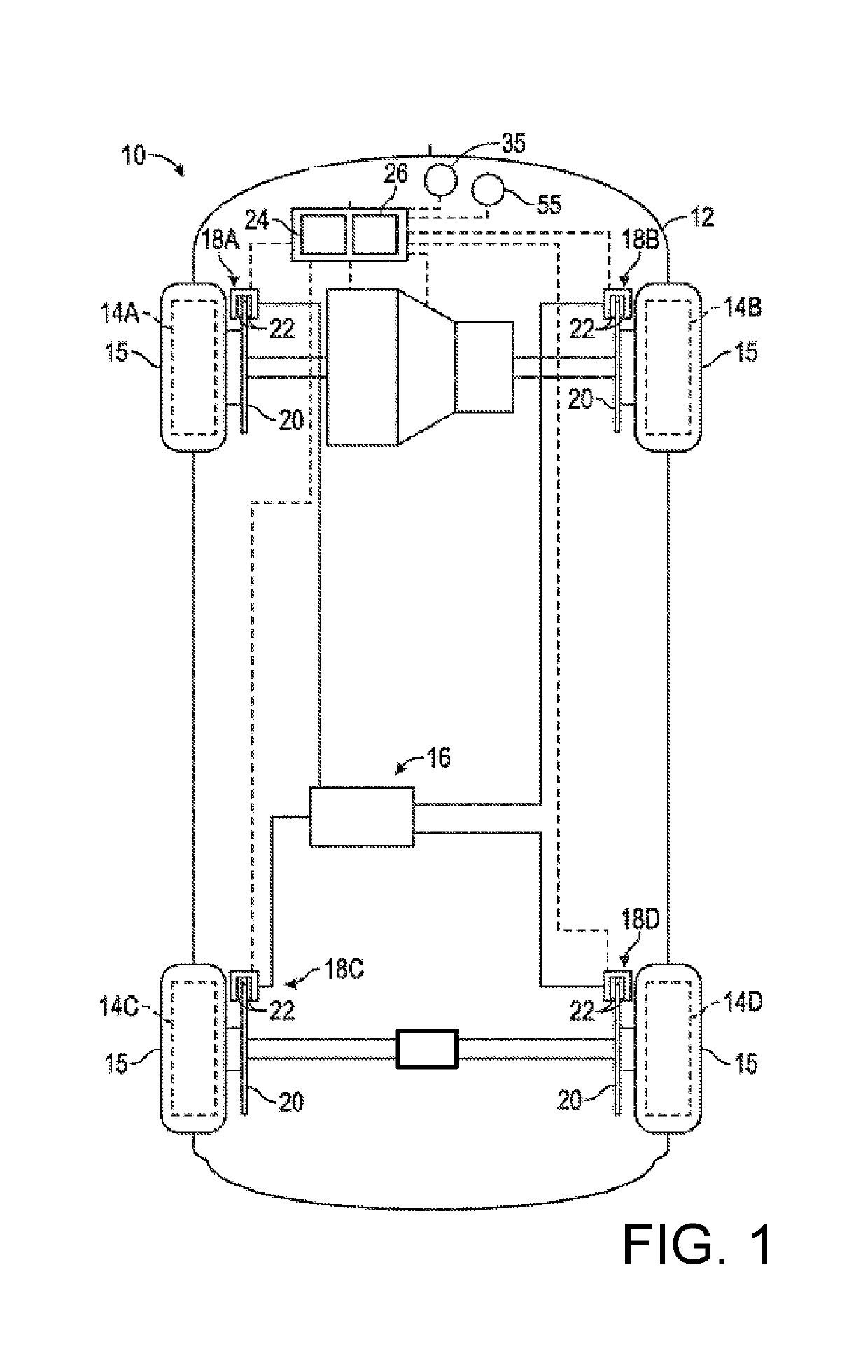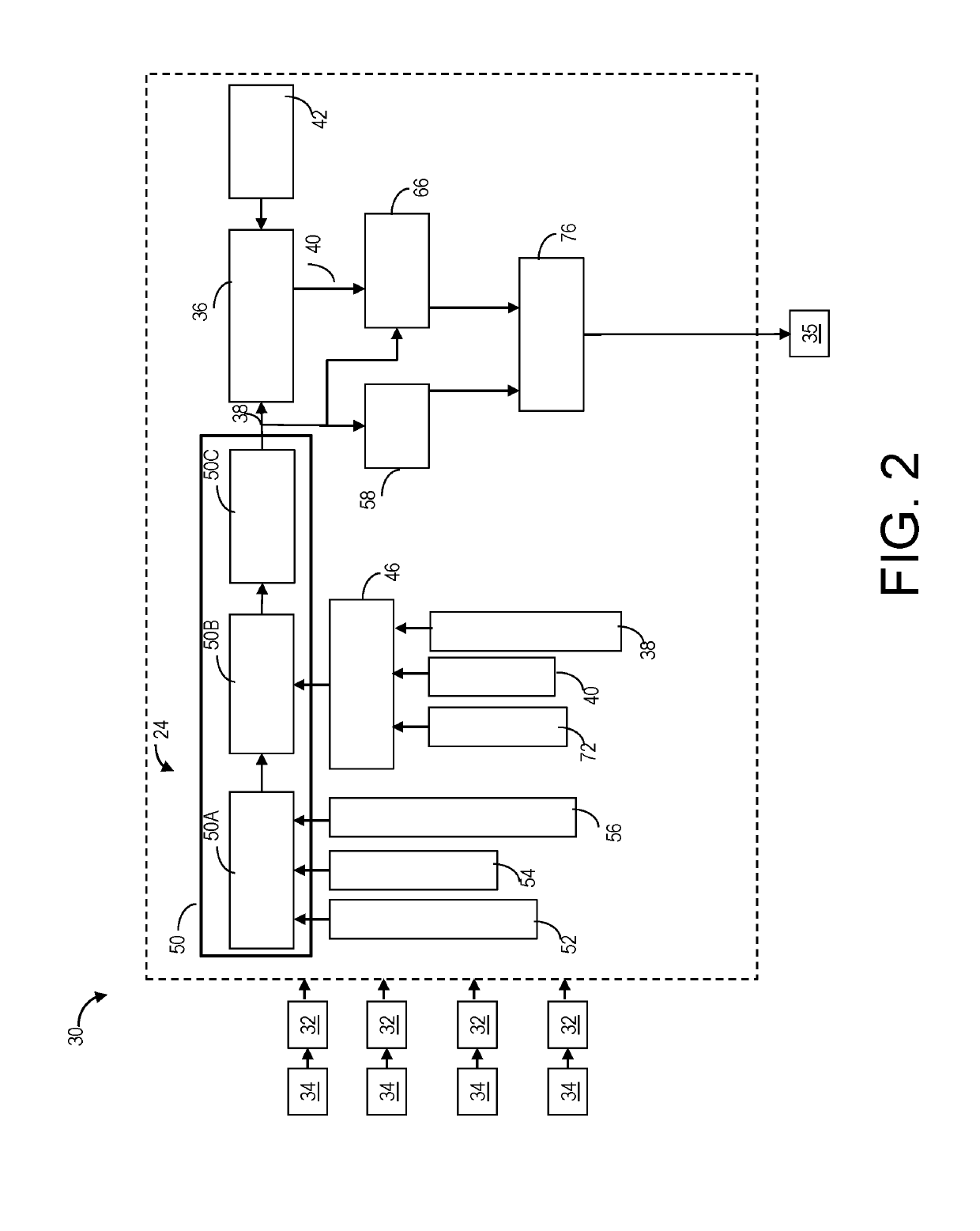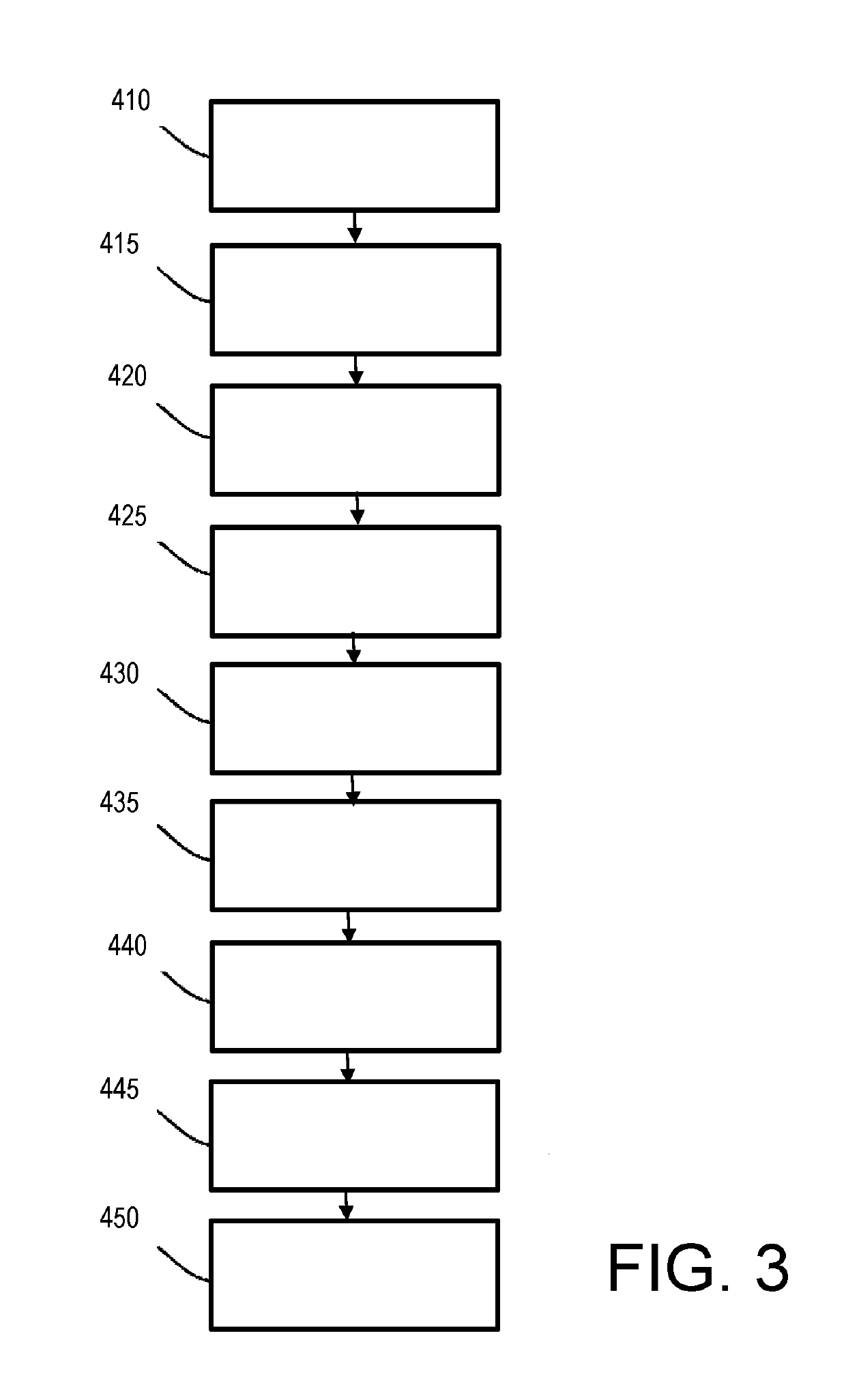Brake pad wear estimation
a technology of brake pads and wear estimation, applied in the direction of mechanical equipment, instruments, force/torque/work measurement apparatus, etc., can solve the problems of giving the vehicle operator advanced warning, mechanical scraper making an annoying high frequency noise, and gradually decreasing the thickness of the brake pad
- Summary
- Abstract
- Description
- Claims
- Application Information
AI Technical Summary
Benefits of technology
Problems solved by technology
Method used
Image
Examples
Embodiment Construction
[0025]The following description is merely exemplary in nature and is not intended to limit the present disclosure, its application or uses. It should be understood that throughout the drawings, corresponding reference numerals indicate like or corresponding parts and features. As used herein, the term module refers to processing circuitry that may include an application specific integrated circuit (ASIC), an electronic circuit, a processor (shared, dedicated, or group) and memory that executes one or more software or firmware programs, a combinational logic circuit, and / or other suitable components that provide the described functionality.
[0026]FIG. 1 shows a vehicle 10 that has a vehicle body 12 that is operatively connected to rotatable wheels 14A, 14B, 14C, 14D for moving the vehicle body 12 when propelled by an engine via a transmission. In one non-limiting example, the vehicle 10 is a front wheel-drive vehicle. A differential operatively connects the front wheels 14A, 14B, and ...
PUM
| Property | Measurement | Unit |
|---|---|---|
| pressure | aaaaa | aaaaa |
| corner torque | aaaaa | aaaaa |
| temperature | aaaaa | aaaaa |
Abstract
Description
Claims
Application Information
 Login to View More
Login to View More - R&D
- Intellectual Property
- Life Sciences
- Materials
- Tech Scout
- Unparalleled Data Quality
- Higher Quality Content
- 60% Fewer Hallucinations
Browse by: Latest US Patents, China's latest patents, Technical Efficacy Thesaurus, Application Domain, Technology Topic, Popular Technical Reports.
© 2025 PatSnap. All rights reserved.Legal|Privacy policy|Modern Slavery Act Transparency Statement|Sitemap|About US| Contact US: help@patsnap.com



